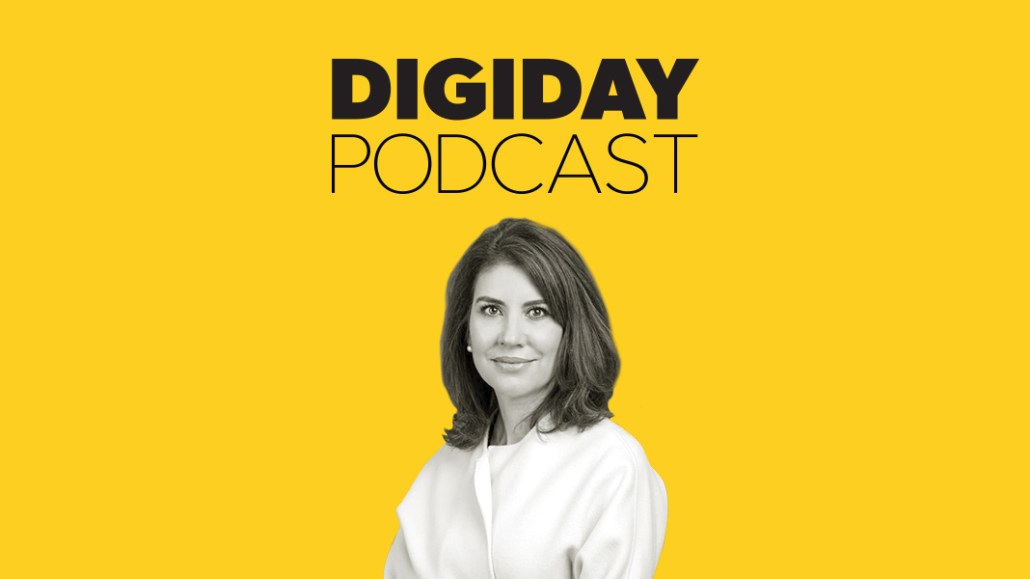Save 50% on a 3-month Digiday+ membership. Ends Dec 5.
Telemundo’s Romina Rosado on why the Hispanic network is betting on streaming

Subscribe: Apple Podcasts | Stitcher | Google Play | Spotify
For Telemundo, shifting to streaming platforms — everything from parent company Comcast’s Peacock to Quibi — is an obvious choice based on a simple fact: The median age for Latinos in the U.S. is 28, much lower than that of the country as a whole.
For Telemundo SVP of Digital Romina Rosado, that means the network needs to be on every new platform it can be to reach the 60 million Hispanics in the U.S.
“Hispanics actually over-index on a lot of social and digital platforms,” Rosado said on the Digiday Podcast. “So for Telemundo, even before covid-19, it was a big part of our mission to make sure we were available on all the platforms.”
Telemundo has about 3,000 hours of programming on NBCU’s Peacock and two programs on Quibi, which Rosado believes will take off once coronavirus ends
“There’s a tremendous amount of schadenfreude here at play, which seems to be a bit of a way that media reacts to media lately,” she said. “People are making very quick judgments, and I think we might all be surprised.”
Ad position: web_incontent_pos1
Here are a few highlights from the conversation, which have been lightly edited for clarity.
Latinos are younger (and especially plugged in)
“What’s definitely tapering off is the insatiable desire for news that we saw at the beginning. The first couple of weeks, the first month, really, was news all the time. Our numbers for both digital and linear consumption went through the roof for anything that was news. And then we started seeing that taper off. What I think will stay behind is when you look at the Hispanic audience composition — this is something I talk about all the time because it’s one of the reasons I moved to Telemundo — is that the median age of the U.S. Hispanic in this country is very low. It’s 28. The median age of the non-Hispanic in this country is 43. So if you think about a 28-year-old and what their media consumption patterns are, right now, they are streaming a lot more content. They’re doing a lot more digital consumption on any platform, and Hispanics actually over-index on a lot of social and digital platforms. So for Telemundo, even before Covid-19, it was a big part of our mission to make sure we were available on all the platforms.”
Why TikTok is thriving where Quibi isn’t
“It’s different, because TikTok is user-generated content. It’s you doing a crazy dance at home, which is where you’re stuck. What Quibi is doing is incredibly different. It’s premium and a different format. What will also happen [is that] once everything is open again, you will not find me is in my home. I’m going to be out and about and trying to enjoy as much as possible being able to be outside.”
Ad position: web_incontent_pos2
Join us on Friday, May 29 at 12 p.m. ET on The New Normal, a weekly interactive show focused on how publishers are adapting their businesses. Josh Raab, Director of Instagram at National Geographic, will talk with Digiday editor-in-chief Brian Morrissey about adapting National Geographic’s Instagram feed in a world where travel (and travel photography) have gotten a lot more complicated. Register here.
More in Media

Digiday+ Research Subscription Index 2025: Subscription strategies from Bloomberg, The New York Times, Vox and others
Digiday’s third annual Subscription Index examines and measures publishers’ subscription strategies to identify common approaches and key tactics among Bloomberg, The New York Times, Vox and others.

From lawsuits to lobbying: How publishers are fighting AI
We may be closing out 2025, but publishers aren’t retreating from the battle of AI search — some are escalating it, and they expect the fight to stretch deep into 2026.

Media Briefing: Publishers turn to vertical video to compete with creators and grow ad revenue in 2026
Publishers add vertical video feeds to their sites to boost engagement, attract video ad spend and compete with news creators.
Ad position: web_bfu
